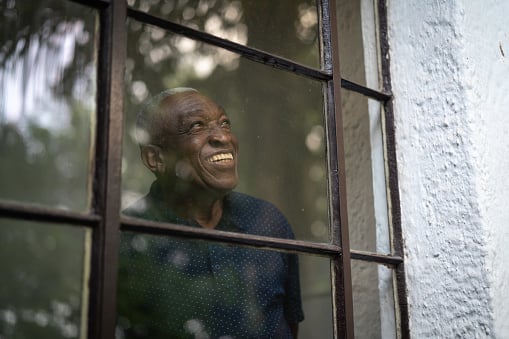
Bigger windows mean more natural light in your space and better views of the outdoors. Learn about the cost to enlarge windows and what affects your total.
This simple DIY could save you hundreds on heating


When temperatures drop, keeping your home cozy is probably one of your top priorities. One of the easiest ways to keep your home warmer and save on energy bills is to use draft stoppers.
A draft stopper blocks gaps under your doors to prevent cold air from entering and blocking warm air from exiting. According to the Office of Energy Efficiency and Renewable Energy, drafts from leaks around doors, windows, and outdated HVAC systems could cost you an extra $200 to $400 per year, so adding things like draft stoppers can help. Check out these simple DIY draft stoppers to save a little extra money this winter.
Measure your fabric so that it’s about 2 inches longer than the width of your door. Fold your fabric in half and sew one end and up the side, to create a tube.
Add popcorn (for weight) and stuffing to your cloth tube. Make sure you fill the tube completely. Sew the end using your needle and thread. Set your filled tube aside for a moment.
Turn the sock(s) inside out and sew across the heel to keep it in place once filled. You can achieve this by sewing straight across the middle of the heel, below the curve.

While the sock is still inside out, put your hand inside the sock. Grab the filled tube with your socked hand and pull it into the sock. As you pull the tube into the sock, the sock should come right-side out. Sew the end of the sock shut to complete your project.
Covering drafts is a simple way to save money on your energy bills and ensure your home stays warm. You can also hire a local handyperson to tackle bigger jobs if you’re not comfortable installing weather stripping yourself. If you want to hire a professional to weatherize your home, weather stripping installation costs around $130 to $400 per project, while new insulation costs between $1,400 and $6,300.
If a professional insulation job is out of your budget, you could further reduce drafts by covering your windows with plastic during the winter. You’ll want to invest about $30 in a proper kit to maximize your savings.
From average costs to expert advice, get all the answers you need to get your job done.

Bigger windows mean more natural light in your space and better views of the outdoors. Learn about the cost to enlarge windows and what affects your total.

Window replacement enhances your home's appearance and helps to maintain a consistent indoor temperature. Discover the cost of window replacement in Columbus.

Window repair costs in Columbus, Ohio, depend on several pricing factors, including the type and size of the repair it needs and the window itself.

Window film, inserts, treatments, and more can improve your window’s energy efficiency. Read this guide to learn how to make old windows more energy-efficient.

This glass weight calculator estimates how much your glass weighs so you can determine the support you need for installing windows and mirrors.

If you’ve been facing storms or humidity recently, it may be time to learn how to repair a rotted window frame to make your windows look brand new.